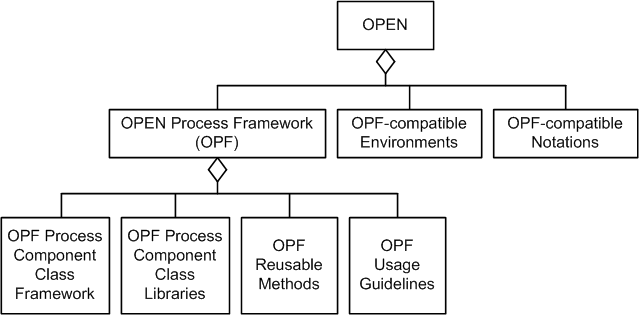
Object-oriented Process, Environment, and Notation (OPEN) is a free, public domain, defacto industry-standard approach for the production of endeavor-specific development methods. OPEN was originally created in the mid-1990s as a merger of several earlier object-oriented software development methods, especially MOSES by Brian Henderson-Sellers, SOMA by Ian Graham, ADM3 by Firesmith, and Synthesis by Meilir Page-Jones. Since then, OPEN has grown and evolved to support the development, sustainment, and retirement of software-intensive systems as well as to support business [re]engineering.

As illustrated in the preceding figure, OPEN is composed of the following three parts:
OPEN was developed and is maintained by the not-for-profit OPEN Consortium, an international group of methodologists, academics, CASE tool vendors and developers. Membership is open to anyone wishing to support the maintenance, enhancement, and promotion of OPEN. The OPEN Consortium is currently co-chaired by Brian Henderson-Sellers and Don Firesmith. More information can be found at the OPEN Consortium website.
There have been several OPEN books published as well as numerous journal articles and conference papers.